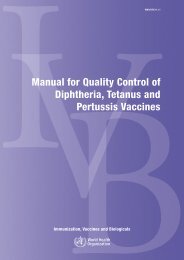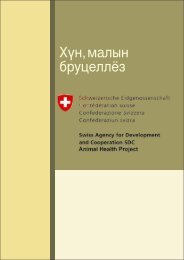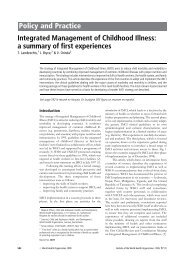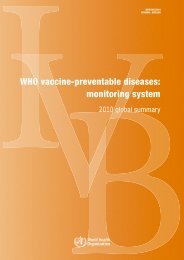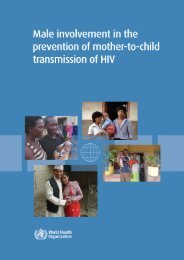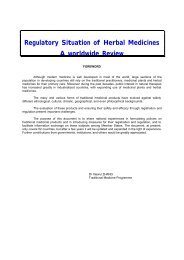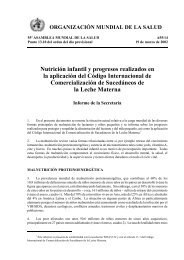IPDE - Extranet Systems - World Health Organization
IPDE - Extranet Systems - World Health Organization
IPDE - Extranet Systems - World Health Organization
Create successful ePaper yourself
Turn your PDF publications into a flip-book with our unique Google optimized e-Paper software.
89 Discussion and Conclusions<br />
emotionally unstable, ICD-10 requires four of seven criteria for a diagnosis;<br />
and except for antisocial, DSM-III-R requires four or five from a<br />
list that varies from seven to nine criteria. Although there are fewer differences<br />
between ICD-10 and DSM-IV, many still remain.<br />
A more detailed comparison of ICD-10, DSM-III-R, and DSM-lV is<br />
beyond the scope of this chapter. However, mention should be made of<br />
the extent to which ICD-10 and DSM-III-R tended to produce similar<br />
results in the present study. Within the limitations imposed by the sample<br />
sizes of the individual disorders, no statistically significant (pc.05)<br />
differences were observed in the base rates with which the corresponding<br />
specific PDs were diagnosed in the overall sample of 716 patients.<br />
There was a trend, albeit statistically not significant, for DSM-III-R to<br />
identify more cases of antisocial, paranoid, and histrionic behaviour and<br />
for ICD-I0 to diagnose more cases of anxioudavoidant behaviour. Both<br />
systems provide a residual category for cases judged to have a PD that<br />
does not meet the requirements for any of the specific types. There is no<br />
method of identifying these patients without invoking some arbitrary<br />
standard. The <strong>IPDE</strong> assigns a residual diagnosis to anyone who does not<br />
meet the requirements for a specific disorder, but nevertheless accumulates<br />
10 or more criteria €mm the various disorders. There are more<br />
opportunities to obtain the diagnosis in DSM-III-R than in ICD-10<br />
because the former has l l0 criteria and the latter only 56. It is not surprising,<br />
then, that approximately twice as many patients received a nonspecific<br />
diagnosis of PD in DSM-III-R as in ICD-I0 (12.8% vs 6.8%).<br />
This, of course, does not address the question of whether the two classification<br />
systems actually identified the same patients as having a particular<br />
disorder. That can be determined by the kappa statistic, particularly<br />
for those disorders with a prevalence of at least 5%. There are only two<br />
of them; the kappas are 0.66 (borderline) and 0.52 (anxiouslavoidant),<br />
evidence of moderate but far €mm perfect agreement. With the distribution<br />
of cases in the sample of 716 patients, these kappas were associated<br />
with 92% agreement regarding the diagnosis of borderline and 89% for<br />
anxioudavoidant. The kappa values for the remaining disorders should<br />
be viewed as relatively unstable because of the base rate problem. They<br />
range from 0.32 (dissocial) to 0.61 (anankastidobsessive-compulsive),<br />
with a median of 0.52. The DSM-III-R and ICD-10 comparisons should<br />
not be a f f d by the less-than-perfect interrater reliability of the <strong>IPDE</strong><br />
since the same examiner conducted the interview and rated the information<br />
on which the ICD-l0 and DSM-111-R diagnoses for a padcular<br />
patient were based.




